#egyptian goddess
Text
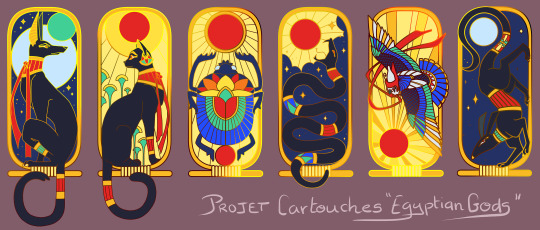
[Projet Cartouches "Egyptian Gods"] Petit projet terminé (à moins que j'ai d'autres idées pour d'autres dieux et déesses ~) avec six cartouches qui donneront des visuels pour des stickers avant d'être simplifié pour de possibles pin's.
#artists on tumblr#french artist#digital artist#digitalart#mangaart#cartouches#egyptian gods#egyptian mythology#egyptian art#ancient egypt#egyptian goddess#anubis#bastet#khepri#apopis#horus#seth
236 notes
·
View notes
Text
before i started my deity work with Aphrodite i prayed to her to make me look like my best self and the day after that my hair started to curl randomly (i have no one in the family with curly hair) and i came out as genderfluid and i still was skeptical
then she gave me so many signs
i literally smelled apple chupa chups when i fell asleep (i didnt have anything apple scented in my room and the window was closed)
i was getting angel numbers constantly
i found a literal shell necklace when i went to throw the trash out
and i was still like "nah cus what if its a misunderstanding"
my soulmate was like "bitch youre so oblivious shes literally calling to you about your cars extended warranty"
and so i asked "if Aphrodite is reaching out to me please show me yourself in my dreams"
AND GUESS WHAT
i dreamed about watching a youtube video called "working with Aphrodite: deity work 101" and there was such a beautiful woman in the video she had a dark skin and long black wavy hair and very thick eyebrows and plump lips and i woke up and i was like "wow she was so pretty" and i was STILL skeptical cus i was like "nah maybe its just because i was thinking about her so much" and my soulmate was FED UP with my dumb bitch shit
and so it was time to do a deity spread because you know maybe its okay and if not then well
and i found a deity spread (i now make my own)
i pulled the card
it was nine of pentacles
i checked the deities associated with the card
"oh, thats random"
another deity spread
the strenght
"oh its the same deity"
ok i think somethings not adding up
and then i researched Bastet
"hmm cats yes, oh dancing,hmmm yeah okay"
and i looked at past me crying randomly because i got the urge to get a cat
and i looked at past me smelling incense randomly
and i looked at past me getting literal signs from her for as long as i could and i was like
"oh my god im so sorry i didnt know"
and so i started my deity work with both of them the same night
past me is stupid, oblivious and made mistakes but past me got me to now where i have a happy established relationship with my goddesses and im forever thankful for that
their altars at first were just sitting on my plant shelf
it was messy
Bastet only had my old silver cat statue, my cat tarot deck (which btw shows her character perfectly) and some tigers eye and tourmaline
Aphrodite only had some rose quartz a drawing of her that i made and a pale pink candle
now we're here and their altars are always full of food offerings to the point i had to upgrade their space to the shelf above
they still share an altar but theyre both okay with it
so uh yeah
just wanted to share this weird story of how i started
(then Aphrodite invited Apollo to my space who helped me a lot with my trauma, then i reached out to Dionysus and Marzanna and now we're here 5 ancient gods sitting in my room watching me read gay fanfiction at night)
#pagan#paganism#witchcraft#deity work#greek gods#aphrodite#aphrodite devotee#bastet#bastet devotee#hellenic goddesses#hellenic deities#hellenic pagan#hellenic polytheism#hellenism#kemetism#kemetic#egyptian goddess#apollo#apollo worship#apollo devotee#dionysus#dionysus devotee#marzanna#morana#morana devotee#slavic goddess
155 notes
·
View notes
Text

Sekhmet, Mistress of Flame, Eye of Ra ❤️🔥
She is the goddess of both healing and disease. Worship of Sekhmet was intended for protection against disease and appeasing her anger and destructive nature. She is depicted with the sun disk to reflect her beneficial qualities and the Uraeus to suggest the destructive proprieties of the cobra. The venom of the cobra brings death but if used correctly it can also be a medicine. Therefore, she is a symbol of transformative anger. She offers fierce compassion and encourages us to face fear with courage.
Prints are coming soon. Let me know if you want one.
#sekhmet#egyptian gods#ancient egypt#egyptian mythology#artists on tumblr#dark artists#dark art#ink art#occult artists#occult art#dark goddess#egyptian goddess#ink illustration#ink drawing
157 notes
·
View notes
Photo

'Coronation of Isis'
Artwork by Stuart Littlejohn
507 notes
·
View notes
Text
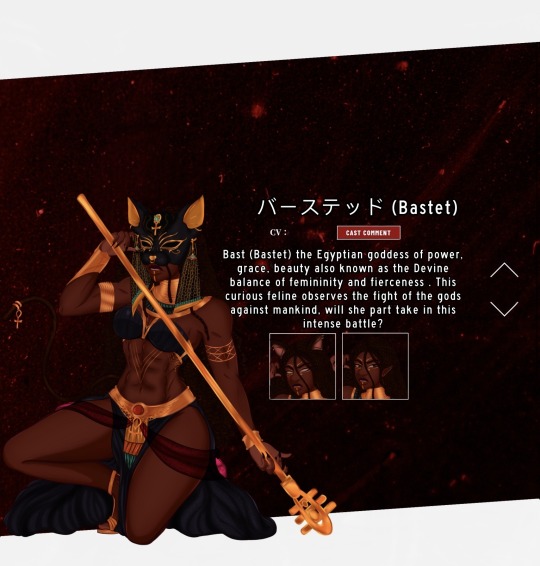
🖤✨Both Beauty & Fierce✨ 🐈⬛
Finally watched record of Ragnarok like I promised my friends I would and made a oc for it. Of course I went with an Egyptian god/goddess because of my old fixations, Bastet the Egyptian pantheon here is quite a curious cat and is often seen lounging on a plush bed. If not lounging then sleeping she’s quite outspoken especially when it comes to Aphrodite’s banter, her remarks tend to involve myths about her and associate Anubis which often annoys Bast the most. Whether or not she is partaking in the fight against the gods and mankind, who she will side with will be just as mysterious as she is. She also has a full on cat form she transforms into at will but I ain’t gonna draw that.
She’s also good friends with The Moon Goddess (@/hannahvastialion )and the nervous deity Lanjar (@/0hcerrie )who she just adopted as her friend (Instagram)
(Full version)
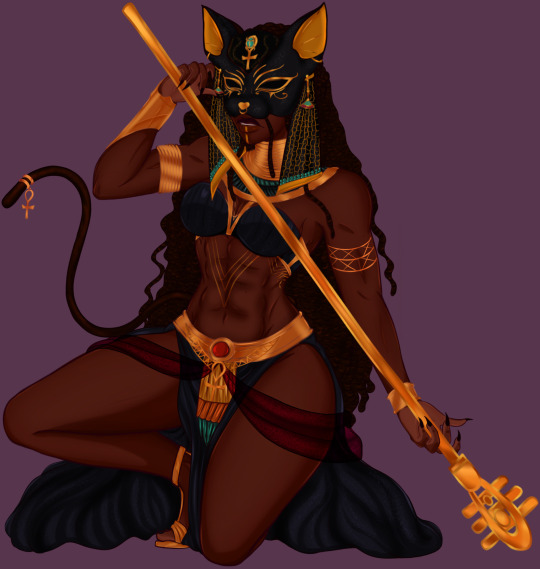
(Without mask)

(Human form)

#record of ragnarok#record of ragnorak#record of ragnorak oc#orginal character#orginal art#shuumatsu no valkyrie#終末のワルキューレ#ror oc#ror#egyptian gods#egyptian goddess#bastet#original characters#ror anubis#ror2#cat girl#art on tumblr#anime art#artists on tumblr
57 notes
·
View notes
Text
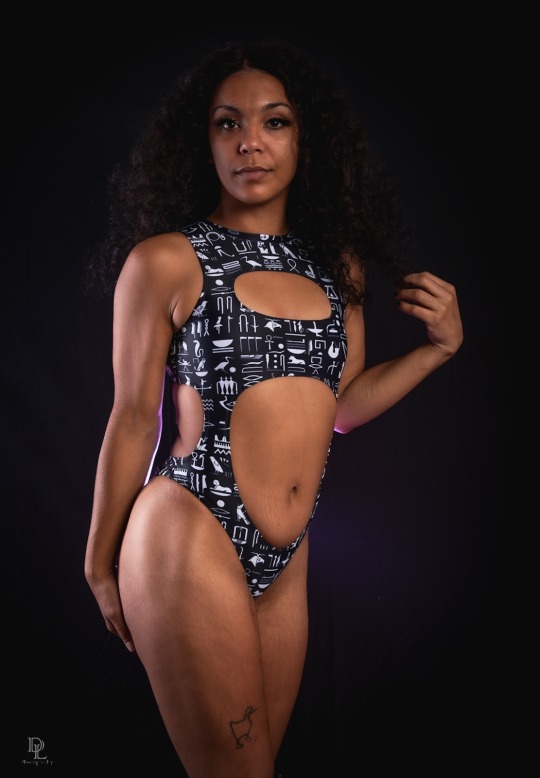
So much fun yesterday shooting this brand deal 🤍🖤
#alternative#egirl#goth#goth girl#published model#goth aesthetic#goth model#goth fashion#alt aesthetic#kawaii#egyptian#alt girls#egirl aesthetic#aesthetic#egyptian goddess
80 notes
·
View notes
Text

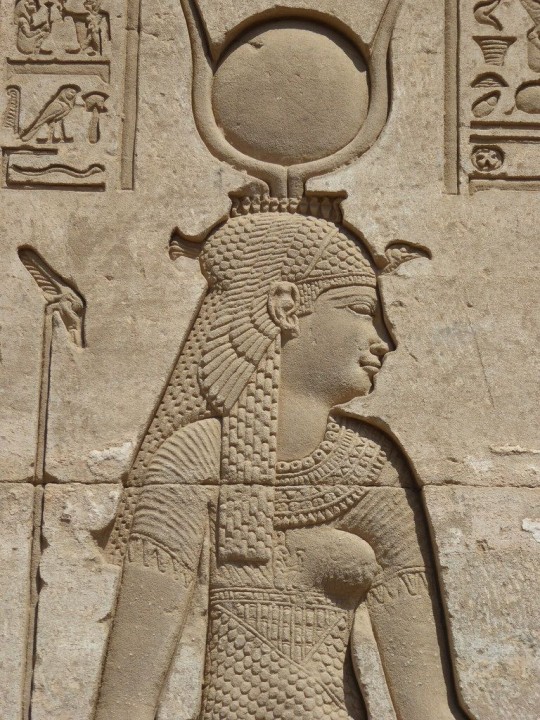
1K notes
·
View notes
Text

Sculpture Faience of an Egyptian goddess.
51 notes
·
View notes
Text
Here’s an experience I had the past few days:
So I don’t work with deities. I’m an ex-Christian and have had some trauma, plus I just haven’t felt the need to do so in my craft.
So imagine back a few months ago how I felt when Bastet just boomed her loud voice in my head while I was peeing. 😂 I just knew who she was and I asked her as respectfully as I could, what she was doing? She told me: “I’m here to protect my cats.” I said “oh okay!” I knew that she watched over cats and so it made sense.
So fast forward to a few days ago. One of my cats had peed on my parents bed and vomited and had diarrhea. I was so scared. I didn’t know what to do, so I decided, out of being desperate, to see if I could ask Bastet for help.
The thing is, I didn’t know if she would want to help me and my cats. I don’t work with her and didn’t know if she’d want to help a random person, even if she showed up that one time while I was peeing.
Sooo I did a bit of research on offerings I could leave Bastet. Since I don’t work with deities, I only had three things that I read she accepted: cinnamon, black tourmaline+smoky quartz (associated with some of her qualities), and a photo of my cats.
I left them out on a table in my room, since I have no altar but wanted to be as respectful as possible. I sat down and told her how I was feeling and how she doesn’t have to help me or my cat but I would love it if she was able to. So I cried and left out the offerings.
Here’s the thing. We had wanted to take my cat in to the vet right away, but they weren’t available until September 28th. So we went on the waiting list. The morning after I set out the offerings for Bastet, we got a phone call saying we could come in the next day! A miracle, honestly. I was so grateful.
The vet took some tests and we were waiting on the results. I kept thinking we might lose my kitty, but earlier today the vet called and the main tests looked normal, however, a number was high for possible parasites. The vet told us we could come in today and get him his yearly deworming. We did.
I’m going to thank Bastet for helping this random person when she didn’t have to. Technically it was my cat, but it helped me too. Bastet is wonderful.
#witchcraft#witch community#witchblr#witches of tumblr#witches#bastet#goddess#egyptian goddess#deities
55 notes
·
View notes
Text
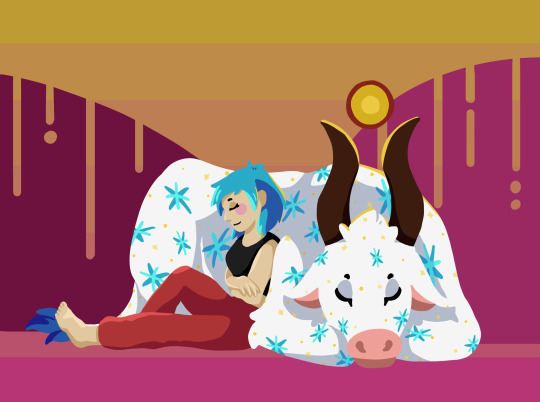
with hathor
#kemetic#kemetic art#hathor#ancient egypt#ancient egyptian#illustration#my art#kemtic art#egyptian goddess
62 notes
·
View notes
Text

Egypt (3rd Intermediate Period, 1069-664 BC), Amulet: cat © Musée du Louvre - Georges Poncet
113 notes
·
View notes
Photo


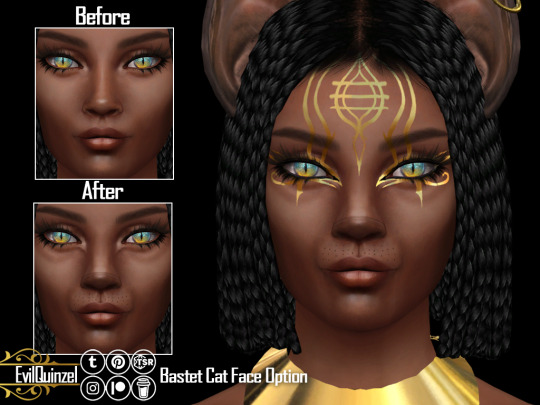
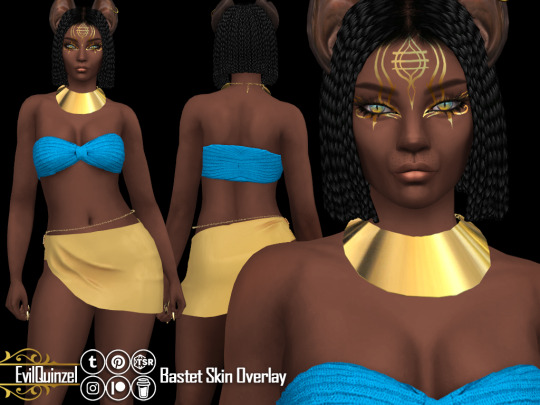

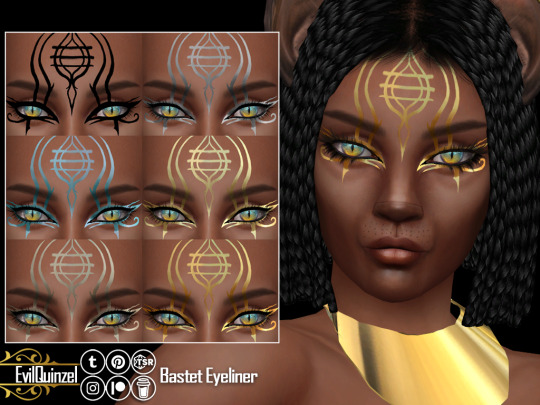

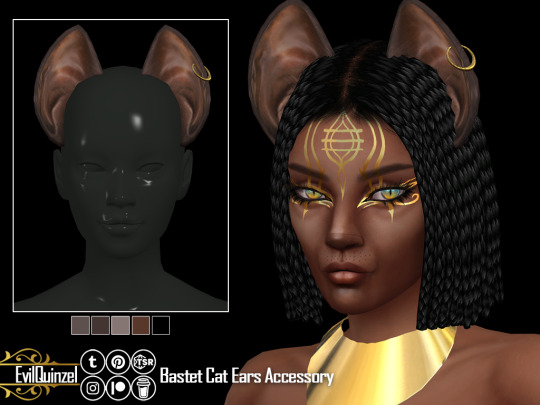
FINALLY! I can show you what I've done for this month! This look is one of my favorite so far 💖 It is inspired by the Egyptian Goddess Bastet! 🐈 Maybe I should do other egyptian divinity, let me know what you think!
I’ve give it a try to meshing again and I created cat ears! I am so proud! 😸
✨VIP Early Access until May 18, 2023✨
Skin ➡ LINK
Cat Face Option ➡ LINK
✨VIP Early Access until May 19, 2023✨
Skin Overlay ➡ LINK
Cat Ears ➡ LINK
✨VIP Early Access until May 20, 2023✨
Eyeliner ➡ LINK
Eyes ➡ LINK
If you search for any item I use on this sim, you can go to my TSR page where I answer faster!
#sims4#sims4cc#sims4ccfinds#ts4#ts4cc#ts4ccfinds#ts4 occult#ts4 alpha#sims 4 alpha#egyptian#egyptian goddess#goddess#fantasy#fantasymakeup#Ts4 Fantasy#fantasyskin#skindetails#skin#cat#cat ears#eyeliner#makeup#eyes#skinoverlay#ts4skinoverlay#TheSimsResource#evilquinzel
141 notes
·
View notes
Text
no one told me about this miasma shit before
like wdym gods refuse my offerings because im on my period
what do i do with those chocolate chip cookies now???
wdym i cant even do an e-offering or dance funny in your honor 😭😭😭
#pagan#paganism#witchcraft#deity work#greek gods#aphrodite#aphrodite devotee#bastet#bastet devotee#apollo#apollo devotee#dionysus#dionysus devotee#marzanna#morana#morana devotee#hellenic deities#hellenic pagan#hellenic polytheism#kemetism#kemetic#egyptian goddess#slavic goddess#slavic deities#rodzimowierstwo#rodzimowiercza wiara
72 notes
·
View notes
Text
Egyptian gods: Hathor
Bastet might be a very famous Egyptian goddess today, but in Ancient Egypt she was definitively not as popular as the great goddess Hathor. This goddess was so famous, so popular and so beloved that, with time, she fused with many other goddesses – for example, she shares numerous attributes and domains with her “sister” Bastet, and she also ended up absorbing inside her the figure of Wadjet. I explained before how Isis took several attributes of Hathor, but in return Hathor also took the place of Isis in many ways. In fact, during the New Kingdom, the two “universal goddesses” were depicted in identical ways, and they could only be differentiated if their name was written alongside their portrait! Finally, Hathor was considered by many to be the “appeased” side of Sekhmet, instead of Bastet. In this alternate version of the Sekhmet myth, Hathor-Sekhmet originally came from Nubia, and after the almost-genocide of humanity and the “let’s get her drunk” episode, Ra decided that Hathor would live in Egypt rather than Nubia, ordering Shu and Thoth to bring Hathor to the country and help her settle down in her sanctuary of Dendera.
Hathor is the goddess of love, dance, music, sexuality and beauty. She was the cow-goddess who appeared sometimes as a woman with cow horns (and between said horns, a solar disk), other times as a cow covered in stars, and other times as a cow-headed woman. Her celebrations were all done in frenetic dancing, incessant music and joyful laughter: her iconic musical instrument was the sistrum, that often had in its handle the carving of a woman’s face with cow ears in her honor – it was believed that through its sounds, she could keep away wicked genies. Hathor was for a good portion of Ancient Egypt’s history the wife of Horus, and thus queen of the heavens and the gods alongside him – who had one son, to complete their triad, Ihy the god of music. Every year, Egyptians celebrated a religious holiday to commemorate the “beautiful meeting” or “beautiful encounter” – the wedding of Hathor and Horus, which ensured the fertility of the land. During this celebration people sang and danced to celebrate the beauty and joyfulness of Hathor, and she was offered a LOT of alcohol – as with Bastet, that I described before, a prominent element of the cult of Hathor was to keep her drunk so that Sekhmet would not wake up. However, what is truly interesting with Hathor’s relationship to Horus is that in the beginning of the Egyptian religion, in the oldest Egyptian myths, she wasn’t at all his wife… she was his mother. This is why her name actually means “House of Horus” – it was only later that Isis took her place as Horus’ mother, and she went down one level in the family tree, becoming his wife.
Nicknamed “The Golden One”, Hathor was a goddess of fertility, of life and of motherhood. She protected women and weddings, and she was the one girls prayed to in order to find a husband. She helped women by easing the pains of the labor, and she protected the newborns by banishing away the evil spirts that could threaten them. A very common motif in Hathor’s depictions is the “seven Hathors” – Hathor was said to have seven daughters, who all looked like her and shared her name, and their role was to be present at every human’s birth, and around the baby’s cradle tell those present what they knew about the fate and destiny of the newborn. Yep, exactly like fairy godmothers in fairytales! Hathor was also a nursing figure – as a motherhood deity and a cow-goddess, Hathor was considered to be the nurse of the pharaohs themselves, not only being depicted shielding them from above with her cow body, but also letting them drink her milk to feed them her divine power.
Hathor had a secondary role to play during the endless fights between Horus and Seth. At first, during the endless trials and debates concerning Horus’s right to the throne: when some of the gods became tired of Ra’s constant siding with Seth and his dragging of the trial, a deity named Baba insulted the sun-god by claiming his sanctuaries were empty, nobody worshiped him anymore and mankind had forgotten about him. Ra left the court and the company of gods, and isolated himself to sulk. Since without Ra nothing could be going on anymore, Hathor decided to give him back his good disposition and make him return among his peers – she went to him, and suddenly lifted up her dress, showing him her genital organs. This sudden display of exhibitionism made Ra laugh out loud, and this brought back joy in his heart, convincing him to forget the insult and return to the divine court. Later, when Seth removed the eyes of Horus as a punishment for him beheading his own mother Isis, it was Hathor that healed his wound and eased his suffering, by using either gazelle’s milk, or her own cow-milk.
The reason why Hathor is sometimes depicted as a cow covered in stars is because she became a sky goddess, and thus fused with Nut, the feminine embodiment of the sky who was also said to transform into a cow from time to time. Her star-covered belly became the sky through which Ra, the Sun itself, travelled during the day, making her somehow the “creator goddess” of the world, since she literally “gave birth” to the Sun every day. Her role as a sky deity also played in her function as the “House of Horus”, since Horus was a heavenly and solar deity – so his house/wife/mother would of course be the sky in which the sun resided. Hathor was thought to be the guardian of the four cardinal directions (East, West, North, South), and when depicted as the “celestial cow”, her four hooves were placed in these four directions. This role as a “cardinal goddess” resulted in her being depicted many times as a four-part goddess, with each cardinal direction having a different “animal” or “avatar” of the goddess: the lioness-Hathor that embodied the Eye of Ra destroying the enemies of the sun (a la Sekhmet), the cow-Hathor that embodied love and rebirth, the cat-Hathor that protected homes and was the royal nurse breast-feeding baby pharaohs (a la Bastet), and the cobra-Hathor who personified beauty and youth. Later in her cult, she received a role that was until now given to the goddess Tefnut – the role of the mistress of far-away country, of the goddess of foreign lands. She was thought to be the patron of the Land of Put, of Byblos, of the Sinai… This notably tied in her title of “Lady of the Turquoises”, since she was thought to protect the miners that dug the turquoise stone out of the Sinai.
Hathor’s final role in Egyptian mythology is, without a doubt, a funeral one. This aspect of her appeared on the left rive of the Nile, between Thebes and Memphis: she became the patron of the Mountain of the Dead. Hathor was thought to stand on top of this mountain, at the frontier between the world of the living and the world of the dead, to welcome with care and compassion all the newly deceased before they entered the Underworld. It was only upon her orders that the stone of the mountain would open up, so that the deceased could begin their travels – all the while being escorted by Hathor, that fed and encouraged them all the way to the court of the dead. A dead that knew the proper prayers and incantations to convince Hathor to carry them on her cow-back would be protected from all the dangers of the Underworld. This is why she, as the “Queen of the West”, often had statues of her in the various necropolises, so as to bring safety and peace to the dead. Hathor was also thought to give back to the deceased the ability to feel a sexual desire – and the texts describe how, for the deceased to reach eternal life and thus be “reborn”, he (because of course this applies to only men here) will need to impregnate the goddess using his returned sexual power…
This all is however more tied to the Theban cult of the dead, since it was the Theban necropolis that focused a lot on the Mountain of the Dead. In other parts of Egypt, her funeral role was rather the one of the “Lady of the Sycamore Tree” – this tree that often grew at the border of the desert was thought to be where the dead rested before entering the Underworld, and the plant from which Hathor emerged to welcome the dead. Again, if the proper prayers and religious formulas are pronounced, Hathor will offer the dead bread and water, which will allow them to receive a place alongside the gods in the afterlife – because accepting the food of Hathor means being a friend of the gods, and accepting to follow them everywhere, without ever returning to the human world. Though, very interestingly, the same way Hathor has a whole fusion and confusion with other goddesses in her role of “music, dance and joy” goddess or as the “divine mother/nurse”, her funeral role as the Queen of the West is also shared (or taken over) by various other female goddesses: Nut the sky-goddess, as I mentioned, but also Maat, Neith, or Imentet. But of all these goddesses, Hathor represented the best the idea of the renewal of life, of finding back hope and joy after death, of pleasure and beauty being given back to the one that lost their body and was about to travel a world filled with demons and monsters.
Some final notes. When the Ancient Greeks decided to make correspondences between Egyptian and Greek gods, they decided that Hathor was the Egyptian Aphrodite. The current temple of Hathor in Dendera we see today was actually built by the last Ptolemaic pharaohs, and seems to date from the Roman era of Egypt – but, according to the text, the place the temple was built on has been a sanctuary of Hathor for a much older time than that. Indeed, the temple we see today was apparently built according to plans and architectural indications that date back to the Old Kingdom, under the rules of Cheops and Pepi the First. And a last trivia: Hathor is considered to be one of the oldest Egyptian goddesses we know of, since her name appears in the oldest text in the history of Egypt (at least at the time of my sources) – the Narmer Tablet, a document that describes how the two kingdoms of Egypt (Upper Egypt and Lower Egypt) were united by Narmer, first pharaoh of the first dynasty. Hathor appears on this text as the patron-goddess, protectress and mother-figure above the pharaoh – which makes sense since, if you recall, in these early times Hathor was seen as the mother of Horus (more specifically of Horus the Young, Horus the Child), and thus, since the pharaoh was Horus embodied as a human, Hathor was the pharaoh’s mother.
65 notes
·
View notes
Text
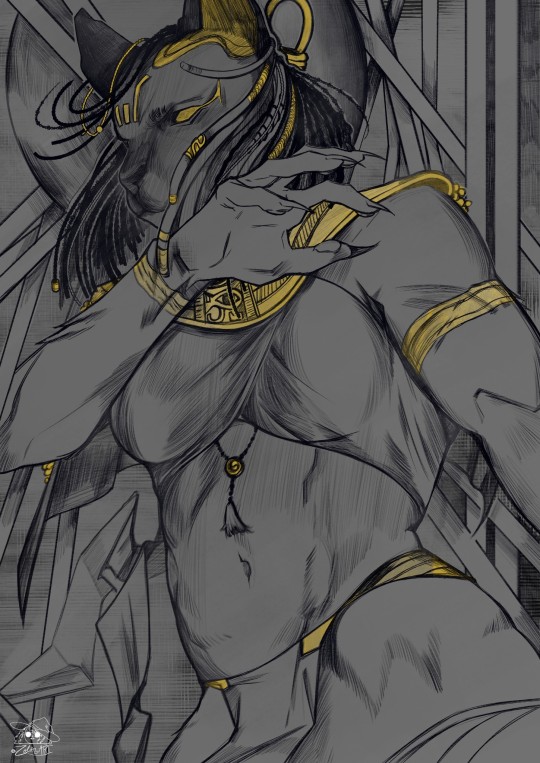
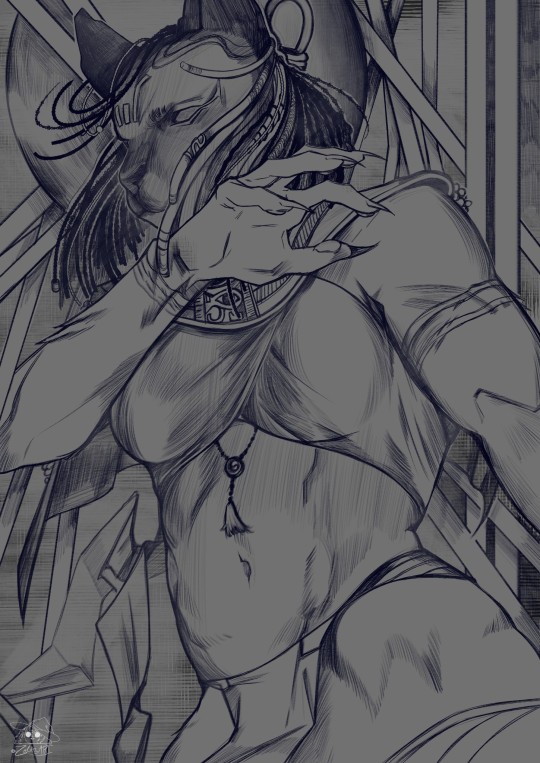
Day 4| Bastet, egyptian goddess of cats. 🐈⬛
📜 More of my stuff
#bastet#egyptian goddess#digital art#digital drawing#inktober 2023#drawtober 2023#lineart#egyptian mythology
49 notes
·
View notes
Text

The beautiful, alluring, cunning, sarcastic, and just a little bit crazy Bastet. From my comic Gods Are Real.
#bastet#egyptian gods#egyptian mythology#egyptian goddess#egyptian#ancient egypt#egypt#dark fantasy#dark fantasy art#fantasy#fantasy art#digital art#digital painting#gods#mythology#comic art#artists on tumblr#illustrator#illustration#digital artwork#digital drawing#digital illustration#kitty#cats#cat#scifi art#scifi mythology#digital artist#art#artwork
12 notes
·
View notes